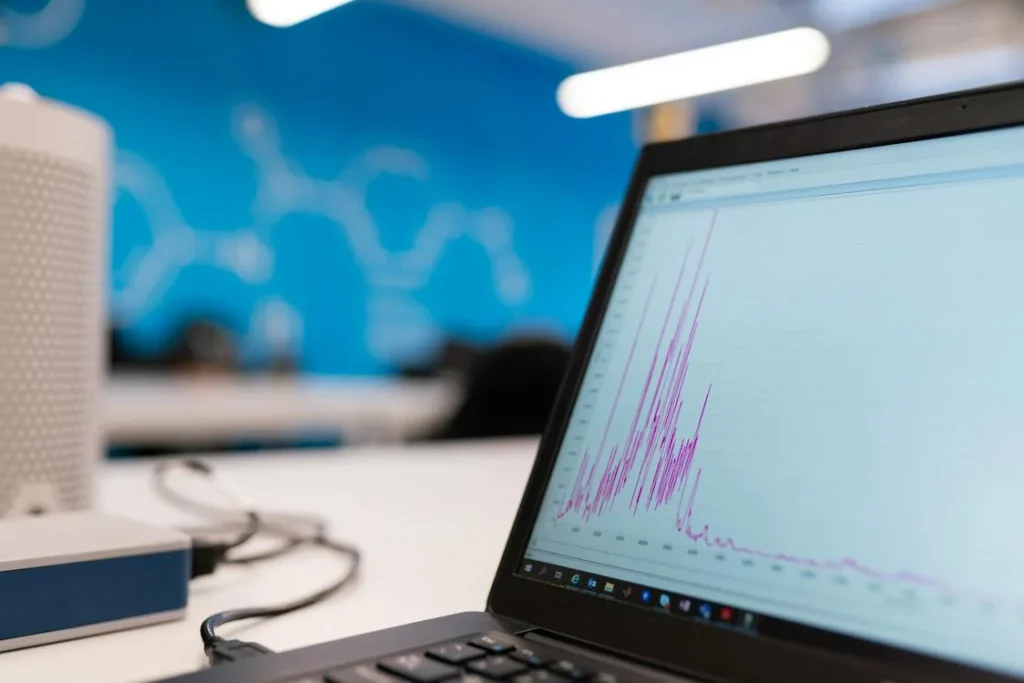Marketing automation has revolutionized the digital marketing landscape, allowing businesses to streamline marketing tasks, improve efficiency, and deliver personalized experiences to their customers. Personalization and targeting are critical components of marketing automation, as they enable marketers to create highly relevant and engaging campaigns that cater to individual users’ preferences, behaviors, and demographic information. This article will explore various personalization and targeting strategies in marketing automation, providing insights and best practices for implementing these approaches in your marketing campaigns.
How Personalization and Targeting works with Marketing Automation
What’s Personalization and Targeting
Personalization refers to the process of tailoring content, offers, and experiences to individual users based on their unique characteristics, behaviors, and preferences. Targeting, on the other hand, involves dividing your audience into specific segments based on shared attributes and creating marketing campaigns designed to appeal to each segment’s unique needs and interests.
The role of personalization and targeting in marketing automation
Both personalization and targeting play vital roles in marketing automation, as they help deliver the right content to the right users at the right time, ultimately increasing engagement, conversion rates, and customer satisfaction. By leveraging marketing automation tools, businesses can automate and optimize their personalization and targeting efforts, driving more efficient and effective marketing campaigns.
Benefits of personalization and targeting in marketing automation
There are numerous benefits to incorporating personalization and targeting strategies into your marketing automation efforts. Some of these benefits include:
- Improved user engagement: Personalized content and experiences are more likely to capture users’ attention and encourage interaction, leading to higher engagement rates.
- Increased conversion rates: By delivering tailored content and offers to users based on their preferences and behaviors, businesses can increase the likelihood of conversions and generate more revenue. (Related Reads: Lead Generation on LinkedIn | Lead Generation for B2B businesses)
- Enhanced customer satisfaction: Personalized experiences help users feel valued and understood, which can result in increased loyalty and satisfaction.
- Better return on investment (ROI): Personalization and targeting can help businesses maximize the efficiency of their marketing spend, resulting in a higher ROI.
Key Personalization Strategies in Marketing Automation
#1. Boost Your Personalization Campaign with Dynamic Content
Dynamic content refers to content that changes based on user behavior, preferences, or demographic information. Examples of dynamic content include personalized product recommendations, tailored email campaigns, and customized web experiences. By offering unique experiences for each user, dynamic content helps improve engagement and conversion rates.
Content amplification can work great as a part of this strategy.
Benefits of dynamic content
Dynamic content offers several benefits for marketing automation efforts, including:
- Dynamic content also helps in delivering enhanced user engagement as users are more likely to interact with content that is relevant and tailored to their needs.
- It may also result in improved conversion rates and better lead nurturing and customer retention.
Best practices for using dynamic content in marketing automation
To effectively leverage dynamic content in your marketing automation efforts, consider the following best practices:
- Utilize AI marketing tools: AI-powered tools can help you create and deliver dynamic content more efficiently. Check out this article for a list of the best AI marketing tools available.
- Test and optimize: Continuously test and optimize your dynamic content to ensure it resonates with your users and drives the desired outcomes. Use multivariate testing and A/B testing to determine the most effective content and design elements.
- Be mindful of user privacy: Ensure your dynamic content efforts adhere to data protection regulations and respect users’ privacy preferences. (Related Reads: CAN-SPAM Act in the US – What Businesses Should Know | Marketing Regulations in the US | How the GDPR affects Businesses Worldwide | Indian Data Protection Regulations that Your Business should follow)
#2. Segmentation for Personalization when Automation Your Marketing Campaign
Segmentation is the process of dividing your audience into distinct groups based on shared characteristics, such as demographics, behaviors, or preferences. Examples of segmentation in marketing automation include creating separate email campaigns for different age groups, targeting users who have abandoned their shopping carts, and sending product recommendations based on browsing history.
Benefits of segmentation
Segmentation offers several advantages for marketing automation efforts, including:
- Improved targeting: By grouping users with similar attributes, businesses can create more relevant and engaging marketing campaigns tailored to each segment’s unique needs and interests. This also helps in faster branding for your business.
- Increased efficiency: Segmentation enables marketers to allocate resources more effectively, focusing on the most valuable and responsive audience segments.
- Enhanced performance tracking: Segmentation allows businesses to track and analyze the performance of their marketing campaigns at a granular level, enabling data-driven insights and optimization.
Types of segmentation in marketing automation
There are several types of segmentation commonly used in marketing automation, including:
a. Demographic segmentation: Dividing your audience based on characteristics such as age, gender, income, and education.
b. Behavioral segmentation: Grouping users based on their actions and interactions with your brand, such as purchase history, website activity, and email engagement.
c. Technographic segmentation: Segmenting users based on their technology usage, such as device type, operating system, and browser preferences. There are several analytics tools that can help you out in this process.
Creating effective segments for personalization
To create effective segments for personalization in marketing automation, consider the following steps:
- Collect and analyze relevant data: Gather information about your audience through various sources, such as website analytics, email engagement metrics, and customer feedback.
- Identify key audience attributes: Determine the most important characteristics, behaviors, and preferences that differentiate your audience segments.
- Define clear segment criteria: Establish specific criteria for each segment to ensure consistent and accurate segmentation.
- Continuously refine and update your segments: Regularly review and update your segmentation criteria based on new data and insights to maintain effective personalization.
Related Read: Best Data Virtualization Software Picked for Businesses
#3. Behavior-based triggers
Behavior-based triggers are marketing automation actions initiated by specific user behaviors. Examples include sending a follow-up email after a user abandons their shopping cart, offering a discount code to users who have viewed a certain product multiple times, or sending a re-engagement campaign to inactive subscribers.
Benefits of behavior-based triggers
Behavior-based triggers offer several advantages for marketing automation efforts, such as:
- Timely and relevant communication: By responding to user actions in real-time, behavior-based triggers ensure that your marketing messages are timely and relevant.
- Improved user engagement: Trigger-based campaigns can capture users’ attention and encourage interaction, leading to higher engagement rates.
- Increased conversion rates: By delivering tailored content and offers based on user behavior, businesses can increase the likelihood of conversions and generate more revenue.
Identifying key customer behaviors for trigger-based campaigns
To effectively implement behavior-based triggers in marketing automation, consider the following steps:
- Analyze user data: Review your user data to identify patterns and trends in behavior, such as common actions taken before making a purchase or factors that contribute to cart abandonment.
- Prioritize high-impact behaviors: Focus on the behaviors that have the most significant impact on your marketing goals, such as actions that correlate with higher conversion rates or increased customer lifetime value.
- Create relevant and engaging trigger-based campaigns: Develop campaigns that respond to user behaviors with relevant content and offers, ensuring that your messages resonate with users and drive the desired outcomes.
Designing and implementing behavior-based triggers in marketing automation
To design and implement effective behavior-based triggers in your marketing automation efforts, consider the following best practices:
- Utilize marketing automation software: Marketing automation platforms can help you set up and manage behavior-based triggers more efficiently. Here’s a list of the best marketing automation software available, that we have reviewed for all business needs and budgets.
- Test and optimize: Continuously test and optimize your trigger-based campaigns to ensure they resonate with your users and drive the desired outcomes. Use usability testing, multivariate testing, and A/B testing to determine the most effective content, design elements, and timing for your campaigns.
- Be mindful of user privacy: Ensure your behavior-based trigger efforts adhere to data protection regulations and respect users’ privacy preferences.
Key Targeting Strategies in Marketing Automation
#1. Demographic targeting
Demographic targeting involves creating marketing campaigns tailored to specific demographic groups, such as age, gender, income, or education level. Examples include sending age-appropriate product recommendations, creating gender-specific email campaigns, or targeting high-income individuals with premium offers.
Benefits of demographic targeting
Demographic targeting offers several advantages for marketing automation efforts, including:
- Improved relevance: By catering to the unique needs and interests of specific demographic groups, businesses can create more relevant and engaging marketing campaigns.
- Increased efficiency: Demographic targeting enables marketers to allocate resources more effectively, focusing on the most valuable and responsive audience segments.
- Enhanced performance tracking: Demographic targeting allows businesses to track and analyze the performance of their marketing campaigns at a granular level, enabling data-driven insights and optimization.
Collecting and utilizing demographic data for targeted campaigns
To effectively leverage demographic targeting in your marketing automation efforts, consider the following best practices:
- Gather demographic data: Collect demographic information about your audience through various sources, such as website analytics, email engagement metrics, and customer feedback.
- Segment your audience based on demographic attributes: Divide your audience into distinct demographic groups to create tailored marketing campaigns for each segment.
- Continuously refine and update your demographic targeting: Regularly review and update your demographic targeting criteria based on new data and insights to maintain effective personalization.
#2. Geographic targeting
Geographic targeting involves creating marketing campaigns tailored to users’ locations, such as city, region, or country. Examples include offering location-specific promotions, targeting users in a specific region with localized content, or sending event invitations to users in a particular city.
Benefits of geographic targeting
Geographic targeting offers several advantages for marketing automation efforts, including:
- Improved relevance: By catering to the unique needs and interests of users in specific locations, businesses can create more relevant and engaging marketing campaigns.
- Increased efficiency: Geographic targeting enables marketers to allocate resources more effectively, focusing on the most valuable and responsive audience segments.
- Enhanced performance tracking: Geographic targeting allows businesses to track and analyze the performance of their marketing campaigns at a granular level, enabling data-driven insights and optimization.
Strategies for effective geographic targeting in marketing automation
To effectively leverage geographic targeting in your marketing automation efforts, consider the following best practices:
- Collect and analyze location data: Gather location information about your audience through various sources, such as website analytics, email engagement metrics, and customer feedback.
- Segment your audience based on geographic attributes: Divide your audience into distinct geographic groups to create tailored marketing campaigns for each segment.
- Localize your marketing content: Ensure your marketing content is relevant and appealing to users in specific locations by incorporating local language, cultural references, and location-specific offers.
#3. Psychographic targeting
Psychographic targeting involves creating marketing campaigns tailored to users’ attitudes, interests, and lifestyles. Examples include targeting fitness enthusiasts with health-related content, sending travel promotions to users who frequently visit travel websites, or offering personalized product recommendations based on users’ hobbies and interests.
Benefits of psychographic targeting
Psychographic targeting offers several advantages for marketing automation efforts, including:
- Improved relevance: By catering to the unique needs and interests of users based on their attitudes and lifestyles, businesses can create more relevant and engaging marketing campaigns.
- Increased efficiency: Psychographic targeting enables marketers to allocate resources more effectively, focusing on the most valuable and responsive audience segments.
- Enhanced performance tracking: Psychographic targeting allows businesses to track and analyze the performance of their marketing campaigns at a granular level, enabling data-driven insights and optimization.
Gathering psychographic data for marketing automation campaigns
To effectively leverage psychographic targeting in your marketing automation efforts, consider the following best practices:
- Collect and analyze psychographic data: Gather information about your audience’s attitudes, interests, and lifestyles through various sources, such as website analytics, email engagement metrics, and customer feedback. You can also leverage psychographics-driven marketing to gather more in-depth insights.
- Segment your audience based on psychographic attributes: Divide your audience into distinct psychographic groups to create tailored marketing campaigns for each segment.
- Continuously refine and update your psychographic targeting: Regularly review and update your psychographic targeting criteria based on new data and insights to maintain effective personalization.
Implementing psychographic targeting in marketing automation
To implement psychographic targeting in your marketing automation efforts, consider the following best practices:
- Utilize marketing automation software: Marketing automation platforms can help you set up and manage psychographic targeting more efficiently. Here’s a list of the best marketing automation software for e-commerce businesses.
- Test and optimize: Continuously test and optimize your psychographic targeting campaigns to ensure they resonate with your users and drive the desired outcomes.
- Be mindful of user privacy: Ensure your psychographic targeting efforts adhere to data protection regulations and respect users’ privacy preferences.
Integrating Personalization and Targeting Strategies
To ensure the success of your personalization and targeting efforts, it is crucial to align these strategies with your overall marketing goals. Consider how your personalization and targeting initiatives contribute to achieving objectives such as increasing brand awareness, driving customer acquisition, or improving customer retention.
Ensuring consistency across marketing channels
Consistency is key when integrating personalization and targeting strategies into your marketing automation efforts. Ensure that your personalized and targeted content is consistent across various marketing channels, such as email, social media, and your website, to provide a seamless and cohesive user experience.
Balancing personalization and targeting with consumer privacy concerns
As you implement personalization and targeting strategies, it is essential to balance these efforts with consumer privacy concerns. Ensure that your data collection, storage, and usage practices comply with relevant data protection regulations, and provide users with clear information about how their data is being used.
Measuring the Success of Personalization and Targeting Strategies
Key performance indicators (KPIs) for measuring success
To gauge the effectiveness of your personalization and targeting efforts, establish key performance indicators (KPIs) that align with your overall marketing goals. Common KPIs include conversion rates, engagement metrics (such as click-through rates and time spent on site), and customer satisfaction scores.
Tracking and analyzing data
Tracking and analyzing data is crucial for measuring the success of your personalization and targeting strategies. Utilize marketing analytics tools to collect and evaluate data related to your KPIs, and conduct regular reviews of your campaign performance. Consider exploring demand generation tools to optimize your data tracking and analysis efforts.
Adjusting strategies based on data-driven insights
Use the data and insights gathered from your tracking and analysis efforts to continuously refine and optimize your personalization and targeting strategies. Identify areas of success and opportunities for improvement, and make data-driven adjustments to your campaigns to enhance their effectiveness and achieve your marketing goals.
Wrapping it up
Personalization and targeting strategies are essential components of effective marketing automation. By understanding and implementing key personalization and targeting techniques, such as dynamic content, segmentation, and behavior-based triggers, businesses can create more relevant and engaging marketing campaigns that resonate with their audience.
Integrating personalization and targeting strategies requires aligning these efforts with overall marketing goals, ensuring consistency across marketing channels, and balancing personalization with consumer privacy concerns. By tracking and analyzing data, businesses can measure the success of their personalization and targeting initiatives and make data-driven adjustments to optimize their campaigns.
By embracing personalization and targeting in marketing automation, businesses can deliver a more tailored and engaging user experience, ultimately driving higher conversion rates, increased customer satisfaction, and improved return on investment.
Read Next:
- How Businesses Can Use Sales Intelligence
- How to Prevent Your Business Falling into Marketing Myopia
- The 3Ps of Marketing that You Absolutely Must Follow
- 7 Marketing Functions Every Business Must Excel at
- How Businesses Can Use Sales Acceleration to drive Rapid Growth
- Best SEO tools in 11 Categories to Drive Up Your Search Engine Traffic!





















